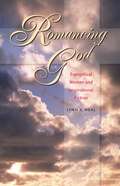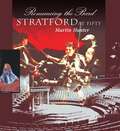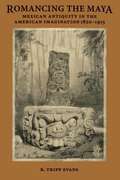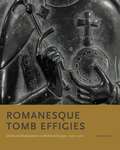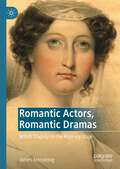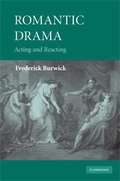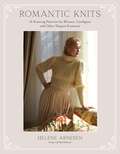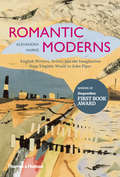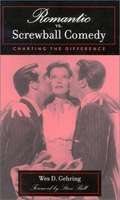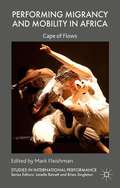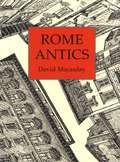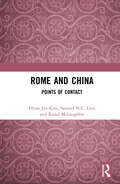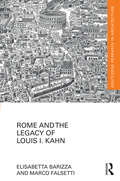- Table View
- List View
Romancing God
by Lynn S. NealIn the world of the evangelical romance novel, sex and desire are mitigated by an omnipresent third party--the divine. Thus romance is not just an encounter between lovers, but a triangle of affection: man, woman, and God. Although this literature is often disparaged by scholars and pastors alike, inspirational fiction plays a unique and important role in the religious lives of many evangelical women. In an engaging study of why women read evangelical romance novels, Lynn S. Neal interviews writers and readers of the genre and finds a complex religious piety among ordinary people.In evangelical love stories, the success of the hero and heroine's romance rests upon their religious choices. These fictional religious choices, readers report, often inspire real spiritual change in their own lives. Amidst the demands of daily life or during a challenge to one's faith, these books offer a respite from problems and a time for fun, but they also provide a means to cultivate piety and to appreciate the unconditional power of God's love. The reading of inspirational fiction emerges from and reinforces an evangelical lifestyle, Neal argues, but women's interpretations of the stories demonstrate the constant negotiations that characterize evangelical living. Neal's study of religion in practice highlights evangelicalism's aesthetic sensibility and helps to alter conventional understandings--both secular and religious--of this prominent subculture.
Romancing Yesenia: How a Mexican Melodrama Shaped Global Popular Culture
by Masha SalazkinaOne of the Best Scholarly Books of 2023, The Chronicle of Higher EducationA free ebook version of this title is available through Luminos, University of California Press's Open Access publishing program. Visit www.luminosoa.org to learn more. This book follows the production, transnational circulation, and reception of the highest grossing film in the history of Soviet exhibition, the 1971 Mexican romance Yesenia. The film adaptation of a telenovela based on a wildly popular graphic novel set during the Second Franco-Mexican War became a surprise hit in the USSR, selling more than ninety million tickets in the first year of its Soviet release alone. Drawing on years of archival research, renowned film scholar Masha Salazkina takes Yesenia’s unprecedented popularity as an entry point into a wide-ranging exploration of the cultures of Mexico and the Soviet Union in the 1970s and of the ways in which popular culture circulated globally. Paying particular attention to the shifting landscape of sexual politics, Romancing "Yesenia" argues for the enduring importance and ideological ambiguities of melodramatic forms in global popular media.
Romancing the Bard: Stratford at Fifty
by Martin HunterRomancing the Bard offers a look at the Stratford Festival in its first fifty years as it developed from a bold venture driven by vision of a handful of eager enthusiasts to its present status as a multi-million dollar cultural and commercial enterprise. With profiles of Stratford personalities from founder Tyrone Guthrie to current artistic director Richard Monette, it provides glimpses of intrigue and conflict both offstage and on. The book traces the development of a distinctive Canadian acting style, the soaring costs of production and design, the conflict between artists and moneymen, the external image promoted by publicists or imposed by critics and the changing mandate as the Festival assumes an increasingly populist character. This is a celebration of a uniquely successful artistic enterprise, and focuses on some of the Festival’s finest productions. Illustrated with photographs from the Festival archives.
Romancing the Maya: Mexican Antiquity in the American Imagination, 1820-1915
by R. Tripp EvansDuring Mexico's first century of independence, European and American explorers rediscovered its pre-Hispanic past. <P>Finding the jungle-covered ruins of lost cities and artifacts inscribed with unintelligible hieroglyphs--and having no idea of the age, authorship, or purpose of these antiquities--amateur archaeologists, artists, photographers, and religious writers set about claiming Mexico's pre-Hispanic patrimony as a rightful part of the United States' cultural heritage.<P>In this insightful work, Tripp Evans explores why nineteenth-century Americans felt entitled to appropriate Mexico's cultural heritage as the United States' own. He focuses in particular on five well-known figures--American writer and amateur archaeologist John Lloyd Stephens, British architect Frederick Catherwood, Joseph Smith, founder of the Church of Jesus Christ of Latter-Day Saints, and the French émigré photographers Désiré Charnay and Augustus Le Plongeon. Setting these figures in historical and cultural context, Evans uncovers their varying motives, including the Manifest Destiny-inspired desire to create a national museum of American antiquities in New York City, the attempt to identify the ancient Maya as part of the Lost Tribes of Israel (and so substantiate the Book of Mormon), and the hope of proving that ancient Mesoamerica was the cradle of North American and even Northern European civilization. Fascinating stories in themselves, these accounts of the first explorers also add an important new chapter to the early history of Mesoamerican archaeology.
Romanesque Tomb Effigies: Death and Redemption in Medieval Europe, 1000–1200
by Shirin FoziFramed by evocative inscriptions, tumultuous historical events, and the ambiguities of Christian death, Romanesque tomb effigies were the first large-scale figural monuments for the departed in European art. In this book, Shirin Fozi explores these provocative markers of life and death, establishing early tomb figures as a coherent genre that hinged upon histories of failure and frustrated ambition.In sharp contrast to later recumbent funerary figures, none of the known European tomb effigies made before circa 1180 were commissioned by the people they represented, and all of the identifiable examples of these tombs were dedicated to individuals whose legacies were fraught rather than triumphant. Fozi draws on this evidence to argue that Romanesque effigies were created to address social rather than individual anxieties: they compensated for defeat by converting local losses into an expectation of eternal victory, comforting the embarrassed heirs of those whose histories were marked by misfortune and offering compensation for the disappointments of the world.Featuring numerous examples and engaging the visual, historical, and theological contexts that inform them, this groundbreaking work adds a fresh dimension to the study of monumental sculpture and the idea of the individual in the northern European Middle Ages. It will appeal to scholars of art history and medieval studies.
Romanesque Tomb Effigies: Death and Redemption in Medieval Europe, 1000–1200
by Shirin FoziFramed by evocative inscriptions, tumultuous historical events, and the ambiguities of Christian death, Romanesque tomb effigies were the first large-scale figural monuments for the departed in European art. In this book, Shirin Fozi explores these provocative markers of life and death, establishing early tomb figures as a coherent genre that hinged upon histories of failure and frustrated ambition.In sharp contrast to later recumbent funerary figures, none of the known European tomb effigies made before circa 1180 were commissioned by the people they represented, and all of the identifiable examples of these tombs were dedicated to individuals whose legacies were fraught rather than triumphant. Fozi draws on this evidence to argue that Romanesque effigies were created to address social rather than individual anxieties: they compensated for defeat by converting local losses into an expectation of eternal victory, comforting the embarrassed heirs of those whose histories were marked by misfortune and offering compensation for the disappointments of the world.Featuring numerous examples and engaging the visual, historical, and theological contexts that inform them, this groundbreaking work adds a fresh dimension to the study of monumental sculpture and the idea of the individual in the northern European Middle Ages. It will appeal to scholars of art history and medieval studies.
Romantic Actors, Romantic Dramas: British Tragedy on the Regency Stage
by James ArmstrongThis book reinterprets British dramas of the early-nineteenth century through the lens of the star actors for whom they were written. Unlike most playwrights of previous generations, the writers of British Romantic dramas generally did not work in the theatre themselves. However, they closely followed the careers of star performers. Even when they did not directly know actors, they had what media theorists have dubbed "para-social interactions" with those stars, interacting with them through the mediation of mass communication, whether as audience members, newspaper and memoir readers, or consumers of prints, porcelain miniatures, and other manifestations of "fan" culture. This study takes an in-depth look at four pairs of performers and playwrights: Sarah Siddons and Joanna Baillie, Julia Glover and Samuel Taylor Coleridge, Edmund Kean and Lord Byron, and Eliza O'Neill and Percy Bysshe Shelley. These charismatic performers, knowingly or not, helped to guide the development of a character-based theatre—from the emotion-dominated plays made popular by Baillie to the pinnacle of Romantic drama under Shelley. They shepherded in a new style of writing that had verbal sophistication and engaged meaningfully with the moral issues of the day. They helped to create not just new modes of acting, but new ways of writing that could make use of their extraordinary talents.
Romantic Comedy (Routledge Film Guidebooks)
by Claire MortimerRomantic comedy is an enduringly popular genre which has maintained its appeal by constantly evolving, from the screwball comedy to the recent emergence of the bromance. Romantic Comedy examines the history of the genre, considering the social and cultural context for key developments in new genre cycles. It studies the key themes and issues at work within romantic comedy films, focusing in particular on the representation of gender and how the genre acts as a barometer for gender politics in the course of the twentieth century. Claire Mortimer provides the reader with a comprehensive overview of the genre, tracing its development, enduring appeal, stars and the nature of its comedy. Mortimer discusses both British and Hollywood classic and contemporary romantic comedies, ranging from canonical films to more recent examples which have taken the genre in new directions. In-depth case studies span a wide variety of films, including: It Happened One Night Bringing Up Baby Annie Hall Four Weddings and a Funeral Bridget Jones’s Diary Wimbledon Knocked Up Sex and the City This book is the perfect introduction to the romantic comedy genre and will be particularly useful for all those investigating this area within film, media or women's studies.
Romantic Comedy: Boy Meets Girl Meets Genre
by Mcdonald Tamar JeffersRomantic Comedy offers an introduction to the analysis of a popular but overlooked film genre. The book provides an overview of Hollywood's romantic comedy conventions, examining iconography, narrative patterns, and ideology. Chapters discuss important subgroupings within the genre: screwball sex comedy and the radical romantic comedy of the 1970s. A final chapter traces the lasting influence of these earlier forms within current romantic comedies. Films include: Pillow Talk (1959), Annie Hall (1977), and You've Got Mail (1998).
Romantic Comedy: Boy Meets Girl Meets Genre (Short Cuts)
by Tamar Jeffers McDonaldRomantic Comedy offers an introduction to the analysis of a popular but overlooked film genre. The book provides an overview of Hollywood's romantic comedy conventions, examining iconography, narrative patterns, and ideology. Chapters discuss important subgroupings within the genre: screwball sex comedy and the radical romantic comedy of the 1970s. A final chapter traces the lasting influence of these earlier forms within current romantic comedies. Films include: Pillow Talk (1959), Annie Hall (1977), and You've Got Mail (1998).
Romantic Drama: Acting and Reacting
by Frederick BurwickDrama in the Romantic period underwent radical changes affecting theatre performance, acting, and audience. Theatres were rebuilt and expanded to accommodate larger audiences, and consequently acting styles and the plays themselves evolved to meet the expectations of the new audiences. This book examines manifestations of change in acting, stage design, setting, and the new forms of drama. Actors exercised a persistent habit of stepping out of their roles, whether scripted or not. Burwick traces the radical shifts in acting style from Garrick to Kemble and Siddons, and to Kean and Macready, adding a new dimension to understanding the shift in cultural sensibility from early to later Romantic literature. Eye-witness accounts by theatre-goers and critics attending plays at the major playhouses of London, the provinces, and on the Continent are provided, allowing readers to identify with the experience of being in the theatre during this tumultuous period.
Romantic Knits: 16 Knitting Patterns for Blouses, Cardigans and Other Elegant Knitwear
by Helene ArnesenFill your wardrobe with breathtaking handmade pieces that you will treasure for years to come. Knitwear designer Helene Arnesen is a master in combining simple knitting techniques with elegant details, such as billowing sleeves, ribbon ties and lace edging, to capture the romantic essence of vintage fashion. More than just a collection of practical patterns, this thoughtfully and artistically crafted book will evoke inspiration and delight with each turn of the page. With Helene, a world of beautiful feminine charm is only a knit purl away.
Romantic Moderns: English Writers, Artists and the Imagination from Virginia Woolf to John Piper
by Alexandra HarrisWinner of the 2010 Guardian First Book Award: a groundbreaking reassessment of English cultural life in the thirties and forties. In the 1930s and 1940s, while the battles for modern art and modern society were being fought in Paris and Spain, it seemed to some a betrayal that John Betjeman and John Piper were in love with a provincial world of old churches and tea shops. Alexandra Harris tells a different story: eclectically, passionately, wittily, urgently, English artists were exploring what it meant to be alive at that moment and in England. They showed that "the modern" need not be at war with the past: constructivists and conservatives could work together, and even the Bauhaus émigré László Moholy-Nagy was beguiled into taking photos for Betjeman's nostalgic An Oxford University Chest. A rich network of personal and cultural encounters was the backdrop for a modern English renaissance. This great imaginative project was shared by writers, painters, gardeners, architects, critics, and composers. Piper abandoned purist abstracts to make collages on the blustery coast; Virginia Woolf wrote in her last novel about a village pageant on a showery summer day. Evelyn Waugh, Elizabeth Bowen, and the Sitwells are also part of the story, along with Bill Brandt and Graham Sutherland, Eric Ravilious and Cecil Beaton.
Romantic Women Writers Reviewed, Part I Vol 3
by Ann R Hawkins Stephanie EckrothThis multi-volume reset collection will addresses significant shortfall in scholarly work, offering contemporary reviews of the work of Romantic women writers to a wider audience.
Romantic vs. Screwball Comedy: Charting the Difference
by Wes D. JehringThis examination of film comedies distinguishes the elements which separate the screwball comedy from the romantic comedy. A great resource for film scholars, movie fans, and writers.
Romanticism (Icon Editions)
by Hugh HonourA study of the influence Romanticism exerts upon Western culture.
Romanticism and the Museum: Cape Of Flows (Studies In International Performance Ser.)
by Emma PeacockePerforming Migrancy and Mobility in Africa focuses on a body of performance work, the work of Magnet Theatre in particular but also work by other artists in Cape Town and other parts of the continent or the world, that engages with the Cape as a real or imagined node in a complex system of migration and mobility. Located at the foot of the African continent, lodged between two oceans at the intersection of many of the earth's major shipping lanes, Cape Town is a stage for a powerful mixing of cultures and peoples and has been an important node in a network of flows, circuits of movement and exchange. The performance works studied here attempt to get to grips with what it feels like to be on the move and in the spaces in-between that characterises the lives, now and for centuries before, of multiple peoples who move around and pass through places like the Cape. The contributors are a broad range of mostly African authors from various parts of the continent and as such the book offers an insight into new thinking and new approaches from an emerging and important location.
Romare Bearden: Collage of Memories
by Jan GreenbergRecounts the life of the twentieth-century African-American collage artist who used his southern childhood. New York City, jazz, and Paris to influence his bold and meaningful art.
Rome
by Spiro Kostof Rabun Taylor Rinne Katherine WentworthSpanning the entire history of the city of Rome from Iron Age village to modern metropolis, this is the first book to take the long view of the Eternal City as an urban organism. Three thousand years old and counting, Rome has thrived almost from the start on self-reference, supplementing the everyday concerns of urban management and planning by projecting its own past onto the city of the moment. This is a study of the urban processes by which Rome's people and leaders, both as custodians of its illustrious past and as agents of its expansive power, have shaped and conditioned its urban fabric by manipulating geography and organizing space; planning infrastructure; designing and presiding over mythmaking, ritual, and stagecraft; controlling resident and transient populations; and exploiting Rome's standing as a seat of global power and a religious capital.
Rome Antics
by David MacaulayA pigeon carrying an important message takes the reader on a unique tour through Rome. As we follow the path of this somewhat wayward bird, we discover that Rome is a place where past and present live side by side. Every time a corner is turned there is a surprise, just as every turn of the page brings a new perspective. This juxtaposition of ancient and modern, as seen with David Macaulay's ingenious vision, gives the reader an imaginative and informative journey through this wondrous city.
Rome Is Love Spelled Backward: Enjoying Art and Architecture in the Eternal City
by Judith TestaA celebration of the art, architecture, and timeless human passion of the Eternal City, Rome Is Love Spelled Backward explores Rome's best-known treasures, often revealing secrets overlooked in conventional guidebooks. With the ancient play on "Roma" and "Amor"—ROMAMOR—Testa invites readers to experience the world's long love affair with one of its most beautiful cities.
Rome Measured and Imagined: Early Modern Maps of the Eternal City
by Jessica MaierAt the turn of the fifteenth century, Rome was in the midst of a dramatic transformation from what the fourteenth-century poet Petrarch had termed a “crumbling city” populated by “broken ruins” into a prosperous Christian capital. Scholars, artists, architects, and engineers fascinated by Rome were spurred to develop new graphic modes for depicting the city—and the genre known as the city portrait exploded. In Rome Measured and Imagined, Jessica Maier explores the history of this genre—which merged the accuracy of scientific endeavor with the imaginative aspects of art—during the rise of Renaissance print culture. Through an exploration of works dating from the fifteenth to the eighteenth centuries, her book interweaves the story of the city portrait with that of Rome itself. Highly interdisciplinary and beautifully illustrated with nearly one hundred city portraits, Rome Measured and Imagined advances the scholarship on Renaissance Rome and print culture in fascinating ways.
Rome and China: Points of Contact
by Hyun Jin Kim Raoul McLaughlin Samuel N.C. LieuRome and China provides an updated history and analysis of contacts and mutual influence between two of ancient Eurasia’s most prominent imperial powers, Rome and China. It highlights the extraordinary interconnectivity of ancient Eurasia which allowed for actual contacts between Rome and China (however fleeting) and examines in detail the influences from both ends of Eurasia which had cultural and political consequences for both Rome and China. This volume will be of interest to anyone working on the Roman Empire, Inner Asia, the Silk Routes and China in the Classical and Late Antique periods.
Rome and Religion in the Medieval World: Studies in Honor of Thomas F.X. Noble (Church, Faith and Culture in the Medieval West)
by Valerie L. Garver Owen M. PhelanRome and Religion in the Medieval World provides a panoramic and interdisciplinary exploration of Rome and religious culture. The studies build upon or engage Thomas F.X. Noble’s interest in Rome, especially his landmark contributions to the origins of the Papal States and early medieval image controversies. Scholars from a variety of disciplines offer new viewpoints on key issues and questions relating to medieval religious, cultural and intellectual history. Each study explores different dimensions of Rome and religion, including medieval art, theology, material culture, politics, education, law, and religious practice. Drawing upon a wide range of sources, including manuscripts, relics, historical and normative texts, theological tracts, and poetry, the authors illuminate the complexities of medieval Christianity, especially as practiced in the city of Rome itself, and elsewhere in Europe when influenced by the idea of Rome. Some trace early medieval legacies to the early modern period when Protestant and Catholic theologians used early medieval religious texts to define and debate forms of Roman Christianity. The essays highlight and deepen scholarly appreciation of Rome in the rich and varied religious culture of the medieval world.
Rome and the Legacy of Louis I. Kahn (Routledge Research in Architecture)
by Elisabetta Barizza Marco FalsettiLouis I. Kahn was one of the most influential architects, thinkers and teachers of his time. This book examines the important relationship between his work and the city of Rome, whose ancient ruins inspired in him a new design methodology. Structured into two main parts, the first includes personal essays and contributions from the architect’s children, writers and other designers on the experience and impact of his work. The second part takes a detailed look at Kahn’s residency in Rome, its effects on his thinking, and how his influence spread throughout Italy. It analyses themes directly linked to his architecture, through interviews with teachers and designers such as Franco Purini, Paolo Portoghesi, Giorgio Ciucci, Lucio Valerio Barbera and the architects of the Rome Group of Architects and City Planners (GRAU). Rome and the Legacy of Louis I. Kahn expands the current discourse on this celebrated twentieth-century architect, ideal for students and researchers interested in Kahn’s work, architectural history, theory and criticism.
